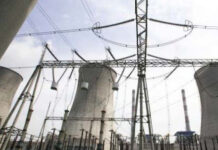The reduction in capital costs associated with solar energy and consequent drop in generation cost on a per kilowatt-hour (kWh) basis has primarily been driven by improvements in technology, and production scale. In effect, generation cost is only one-fifth of what it was six years back resulting in market-driven adoption of solar panels across the board. It also enabled electrification of off-grid areas or areas with intermittent electricity supply. The adoption of solar, primarily rooftop, decentralized, and off-grid has largely been driven by market forces rather than any government intervention. If anything, the imposition of arbitrary taxes, considerable delays in net metering which needs to be facilitated by distribution companies, and the absence of any cohesive solar strategy have largely acted as a deterrent. The absence of government has fared better for solar in the country, than its presence.
Recently, the government has announced a plan to roll out 10,000 MW of solar generation capacity across the country, split between installation near [high-load feeders], in government offices, etc. A novel plan, which should certainly be catalyzed given the country’s dependence on imported sources of energy, which have been deemed unaffordable in the current scenario. To reduce electricity costs for consumers, it is imperative that necessary steps are taken, and the rollout of 10,000 MW of solar is one such step. However, this will add to already excess capacity in the country. The problem isn’t capacity, but the availability of affordable sources of energy (i.e. fuel, whether that is coal or imported gas).
The problem is with the incentive structure that is being offered. Given the benefits of scale and technology, generation through solar is now lower than other fossil fuels. In such a scenario, there exists no rationale for the government to guarantee the purchase of power, which eventually translates into capacity payments. Solar generation by virtue of its market competitive generation cost would remain one of the cheaper sources, and hence be at the top of the electricity dispatch merit order. If the market and technology are already solving a problem, there exists no reason why any kind of demand guarantees are made available, considering how capacity payments continue to weigh heavily on our energy bills.
Similarly, providing a benchmark tariff, and indexing the same to 70% movement in PKR-USD parity also does not make sense. In the case of solar, the radiation of the sun is being utilized, which is certainly not linked to any movement in PKR-USD parity. Similarly, there exists no reason why there needs to be a benchmark tariff when a market competitive tariff can be used for the selection of projects. By creating a benchmark, and indexing it to PKR-USD parity, we are essentially creating a market floor, incentivizing the producer, while passing on the welfare loss to the consumer.
Indexing the tariff to PKR-USD parity also creates a misalignment, wherein the incentive to improve efficiencies to reduce costs and remain competitive would be eliminated, as an index to PKR-USD parity would virtually guarantee escalation in tariff and distort the market. The consumer continues to pay a heavy price for such indexing for power projects across the spectrum, continuing the same would be further eroding any long-term cost benefits that can be accrued from solar energy.
Land is a major cost in any utility scale solar project. The government providing land in strategic locations is an incentive which can catalyze rapid installation and off-take, and is appreciated. Availability of land at zero upfront cost would further reduce project cost, and consequently reduce electricity generation cost. Similarly, the only thing that the government should guarantee is connectivity to the grid, as infrastructure for the same is still completely controlled by the government. Everything else should be left to market forces,such that the best possible price can be discovered for the consumer. Absence of a price discovery process and plethora of incentive which institute a price floor can potentially lead to welfare loss for consumers, and can defeat the primary objective of the initiative, which is to generate clean affordable electricity via solar.
























Welcome to Versatile Coupons, the final location for getting a versatile deal on your internet-based buys. Our central goal is to assist customers with enjoying you find the best arrangements and limits on the items you love. We comprehend that setting aside cash can be intense, particularly while shopping on the web. That is the reason we’ve made it our objective to present to you the best-in-class coupons and markdown codes from top retailers. Whether you’re looking for garments, gadgets, or home merchandise, we take care of you.